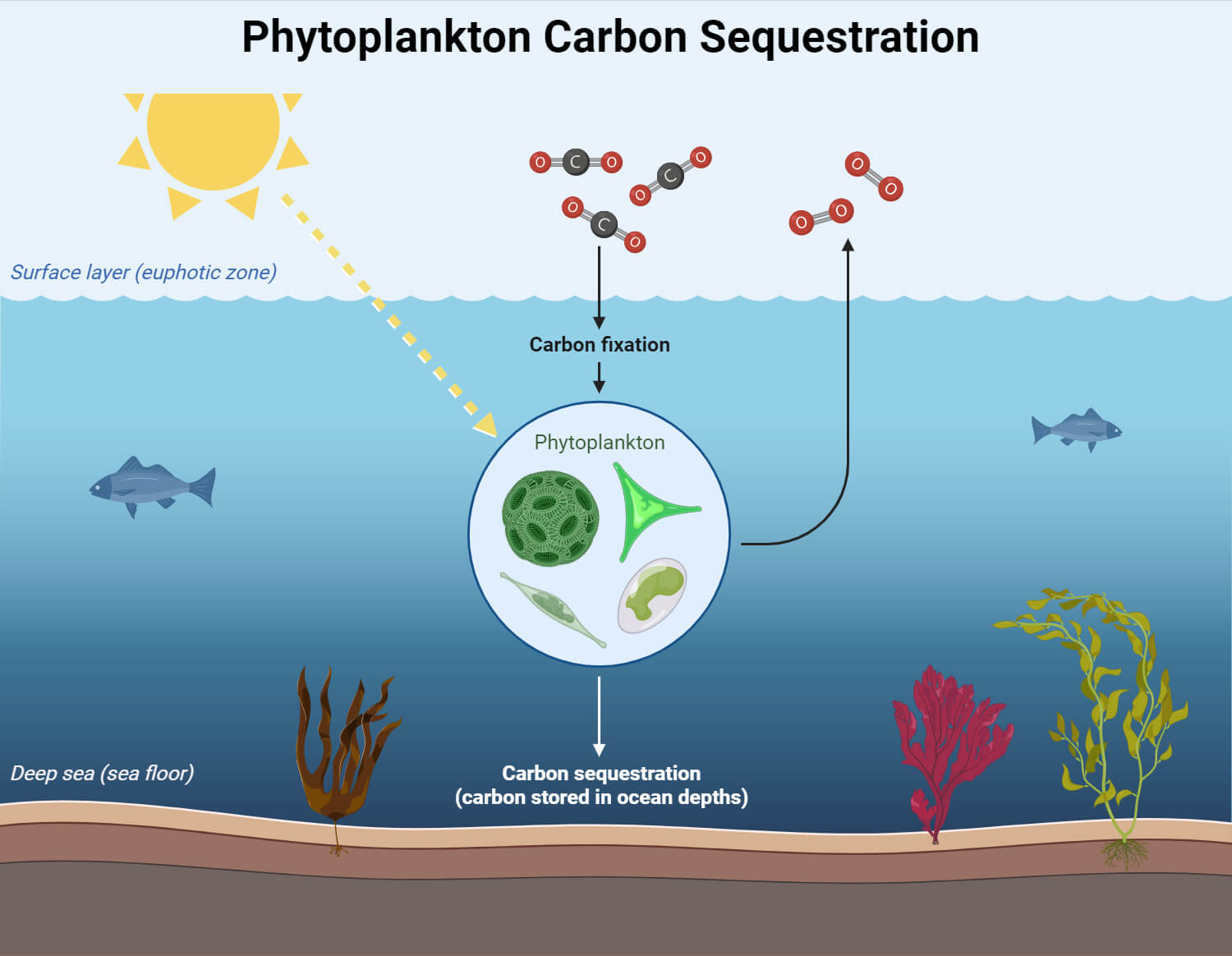Carbon fixation represents a biological phenomenon where photosynthesis transforms atmospheric carbon dioxide (CO2) into organic substances.
This process converts carbon atoms into various molecules, including carbohydrates, proteins, and lipids.
It connects the inorganic carbon stored in the atmosphere with the organic carbon in living organisms and ecosystems.
Carbon fixation is indispensable in the intricate global carbon cycle, which involves intricate exchanges between the Earth’s atmosphere, land, oceans, and living organisms.

Interesting Science Videos
What is Carbon Fixation?
Carbon fixation is a crucial biological and chemical process where carbon dioxide (CO2) from the atmosphere is converted into organic compounds.
The process forms the foundation of the carbon cycle. It plays an important role in sustaining life on Earth and regulating its climate.
Essential for All Life on Earth
- Carbon fixation is essential for all life forms on Earth as it provides the primary organic carbon source.
- Plants, algae, and certain bacteria perform photosynthesis to fix carbon and convert atmospheric CO2 into carbohydrates and other organic compounds.
- Herbivores and omnivores consume plants and pass on fixed carbon through the food chain. Carnivores then obtain fixed carbon by consuming herbivores or other carnivores.
- Carbon fixation creates the organic molecules that constitute all living organisms’ cells, tissues, and structures.
Natural Carbon Fixation
Natural carbon fixation processes play a fundamental role in maintaining a balanced carbon environment on Earth.
Photosynthesis in Plants and Algae
The process is central to carbon fixation on land and in aquatic environments.
Plants and algae use chlorophyll to capture atmospheric carbon dioxide (CO2) during daylight hours. CO2 is transformed into glucose (sugar) and oxygen (O2) through chemical reactions.

Chemolithotrophy in Certain Bacteria
Specific bacteria engage in chemolithotrophy in extreme environments like deep-sea hydrothermal vents or acidic hot springs. These bacteria use inorganic compounds, such as sulfur or iron, as energy sources to convert CO2 into organic molecules.
This process contributes to carbon fixation in ecosystems where traditional photosynthesis is not feasible.
The Role of Oceans and Marine Organisms
Oceans serve as crucial natural carbon sinks in the global carbon cycle. Microscopic marine plants called phytoplankton perform photosynthesis similar to land-based plants. They capture carbon dioxide from seawater and convert it into organic matter.
Zooplankton and other marine organisms feed on phytoplankton and transfer fixed carbon through the marine food web.
Anthropogenic Carbon Fixation
Anthropogenic Carbon Fixation involves human-driven activities that influence the global carbon balance:
Deforestation
Human activities like clearing forests for agriculture or urban development reduce natural carbon fixation by destroying trees, which absorb and store carbon.
Agriculture
Agriculture emits carbon and has the potential for carbon sequestration in soils. Practices like afforestation, agroforestry, and no-till farming can enhance carbon storage in the soil, mitigating CO2 emissions.
Carbon Capture and Storage (CCS) Technologies
These technologies capture CO2 emissions from industrial processes and power plants. It stores them underground and prevents their release into the atmosphere, reducing anthropogenic carbon emissions.
The Role of Photosynthesis in Carbon Fixation
Photosynthesis, a pivotal process, is essential for carbon fixation, predominantly carried out by plants and algae. Here’s a closer look at this remarkable mechanism:
Carbon Capture and Conversion
Plants and algae capture carbon dioxide (CO2) from the atmosphere through tiny openings called stomata or directly from water (aquatic plants). Within specialized chloroplast structures, CO2 combines with water, facilitated by sunlight.
The Role of Chlorophyll and Sunlight
Chlorophyll is a green pigment in chloroplasts that captures light energy from the sun. The energy powers the conversion of CO2 and water into glucose (a carbohydrate) and oxygen.
Its unique ability to absorb specific wavelengths of light allows photosynthesis to occur.
Release of Oxygen as a Byproduct
An intriguing aspect of photosynthesis is the release of oxygen (O2) as a byproduct. The oxygen is vital for life on Earth, serving as the oxygen source for respiration in many organisms.
Carbon Fixation in Aquatic Environments
In marine ecosystems, carbon fixation is a vital process that contributes to climate regulation:
Role of Phytoplankton
Phytoplankton are the primary carbon fixers in oceans. Like their terrestrial counterparts, they use photosynthesis to convert CO2 into organic matter.
Importance of Healthy Oceans
Healthy oceans are crucial in mitigating climate change. Carbon fixed by phytoplankton and other marine organisms helps to reduce CO2 levels in the atmosphere.

Conclusion
Carbon fixation, primarily driven by photosynthesis in plants and algae, is essential for Earth’s carbon cycle and sustains life through oxygen release.
Natural processes like photosynthesis and marine phytoplankton contribute significantly, but human-induced carbon fixation, including deforestation and agriculture, has adverse impacts.
Recognizing the significance of carbon fixation highlights the need to balance natural processes to maintain global climate stability and environmental sustainability.
References
- Ducat DC, Silver PA. Improving carbon fixation pathways. Curr Opin Chem Biol. 2012;16(3-4):337-344. doi:10.1016/j.cbpa.2012.05.002
- Santos Correa S, Schultz J, Lauersen KJ, Soares Rosado A. Natural carbon fixation and advances in synthetic engineering for redesigning and creating new fixation pathways. J Adv Res. 2023;47:75-92. doi:10.1016/j.jare.2022.07.011
- Fuyu Gong, Yin Li, Fixing Carbon, unnaturally. Science354, 830-831(2016). DOI:10.1126/science.aal1559
- Santos Correa S, Schultz J, Lauersen KJ, Soares Rosado A. Natural carbon fixation and advances in synthetic engineering for redesigning and creating new fixation pathways. J Adv Res. 2023;47:75-92. doi:10.1016/j.jare.2022.07.011
- Weigmann K. Fixing carbon: To alleviate climate change, scientists are exploring ways to harness nature’s ability to capture CO2 from the atmosphere. EMBO Rep. 2019;20(2):e47580. doi:10.15252/embr.201847580
- https://www.sciencedirect.com/topics/agricultural-and-biological-sciences/carbon-fixation
- https://www.sciencedirect.com/topics/biochemistry-genetics-and-molecular-biology/carbon-fixation
